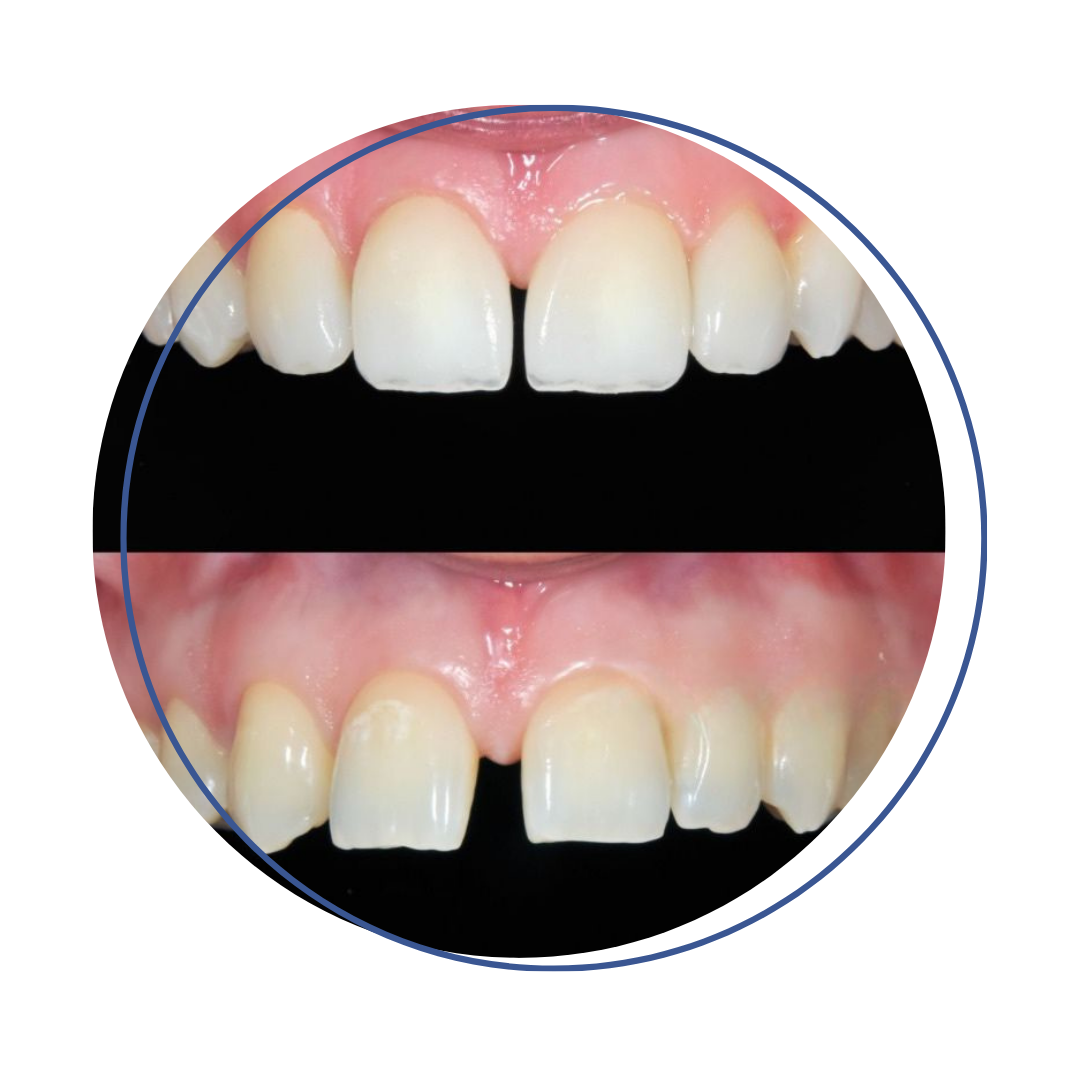COMPOSITE BONDING

Looking to restore your smile seamlessly?
Composite bonding helps to enhance your smile by repairing chips, closing gaps, and improving the appearance of discoloured or misshapen teeth.
At Northern Dental, we offer expert composite bonding services tailored to your smile. Whether you want to address minor imperfections or completely transform your smile, our personalised approach ensures that your composite bonding treatment is precisely customised to meet your needs. With our gentle and non-invasive process, you can achieve a beautifully enhanced smile with minimal discomfort and downtime.
Our gentle, non-invasive & easy process!
Step 1
In the initial stage, our dental team assesses your smile and discusses your goals. We'll determine if composite bonding suits you and outline the treatment plan.
Step 2
The targeted teeth are gently prepared by etching the surface to create a suitable bonding environment. This step ensures optimal adhesion of the composite resin.
Step 3
Layers of composite resin matching your tooth shade are meticulously applied and shaped to correct imperfections, such as chips or gaps, achieving the desired aesthetics.
Step 4
Using a special curing light, the composite material is hardened and bonded to your teeth. Final adjustments are made, and the surface is polished to achieve a seamless, natural-looking finish.
Answers to Commonly Asked Questions Before Your Composite Bonding Appointment
Composite Bonding is a modern way to restore teeth, either for cosmetic reasons or to build up tooth structure that has been lost. It involves bonding a tooth-coloured resin material to existing teeth to reshape them or improve their colour.
Composite Bonding can usually be carried out in just one visit to the dentist. It’s a fast and effective way to fix minor cosmetic issues such as filling chips, fractures, and gaps between teeth or to improve discolouration. The composite is then set using a curing light as soon as it’s applied and shaped, resulting in a tooth that can comfortably bite down by the end of the appointment. Composite Bonding is a non-invasive procedure. With alternatives such as crown and veneers, part of the tooth is permanently removed. For composite Bonding to be applied, the tooth’s surface only has to be roughened to help the resin bond, meaning the tooth’s structure remains intact.
It can be used alongside teeth whitening treatments to help you achieve a brighter, whiter smile. If you plan to have composite Bonding, the dentist will typically recommend that you have teeth whitening treatments first. The composite shade will be selected to match your teeth’ colour, so it is advisable to get them to your preferred shade before treatment for Bonding begins. Once the composite bond has been placed, it is not possible to whiten it further.
You and your dentist will start by choosing a resin colour that matches your tooth best so that the resin attachment looks natural. Your tooth will then be prepared for treatment by slightly roughening the tooth surface.
It will then be coated with a bonding liquid that helps the composite adhere smoothly. The composite will be applied and moulded into the required shape. It is hardened with a curing light before being shaped again and polished by your dentist until it matches the rest of the tooth.
There are generally no specific dietary or lifestyle restrictions in the hours leading up to your composite bonding procedure. However, it’s essential to follow any instructions your dental provider provides. Here are some general guidelines to consider:
Maintain Oral Hygiene: Continue to brush and floss your teeth as usual to ensure your mouth is clean and free of plaque and debris.
Avoid Eating or Drinking: Depending on the type of anaesthesia or sedation used during the procedure, you may be advised to avoid eating or drinking anything for a certain period beforehand. Follow any fasting instructions your dental provider provides to ensure your safety and comfort during the procedure.
Arrive On Time: Arrive at your appointment on time or slightly early to allow for necessary paperwork or pre-procedure preparations.
Wear Comfortable Clothing: Wear comfortable, loose-fitting clothing to your appointment to help you feel relaxed and comfortable during the procedure.
Plan for Transportation: If you receive sedation or anaesthesia during the procedure, arrange for someone to drive you to and from your appointment. You may be too tired to drive safely afterwards, so it’s essential to have someone assist you.
Communicate Any Concerns: If you have questions or concerns about the procedure or pre-operative instructions, don’t hesitate to contact your dental provider for clarification.
By following these guidelines and any specific instructions your dental provider provides, you can help ensure a smooth and successful composite bonding procedure.
It will then be coated with a bonding liquid that helps the composite adhere smoothly. The composite will be applied and moulded into the required shape. It is hardened with a curing light before being shaped again and polished by your dentist until it matches the rest of the tooth.
The longevity of composite Bonding can vary depending on several factors, including the bonded area’s location, the Bonding’s extent, the patient’s oral hygiene habits, and their lifestyle habits.
On average, composite Bonding can last anywhere from 5 to 10 years or more with proper care and maintenance. The composite bonding material is durable and resistant to wear, making it suitable for restoring minor cosmetic imperfections such as chipped or discoloured teeth.
However, the bonded material may become worn, stained, or chipped over time, especially in areas of high stress or heavy chewing forces. To maximise the lifespan of composite Bonding, it’s essential to practice good oral hygiene, including brushing and flossing regularly and attending regular dental check-ups and cleanings.
Avoiding habits that can damage the bonded material, such as chewing on hard objects or using the teeth as tools, can also help prolong its longevity. Regular monitoring by a dental professional is essential to detect any signs of wear or damage to the bonded material early on and address them promptly. Depending on the condition of the Bonding and the patient’s preferences, touch-up or replacement may be necessary to maintain the desired aesthetic results.
Overall, with proper care and maintenance, composite Bonding can provide a durable and aesthetically pleasing solution for enhancing the smile’s appearance for several years.

Aftercare for a Composite Bonding Treatment
Northern Dental prioritises your oral health and well-being even after your Composite Bonding procedure. The essential aftercare is crucial to maintaining good oral health and prolonging the longevity of your teeth.
We have prepared a comprehensive aftercare guide to assist you. Click here to see the Composite Bonding aftercare guide:




